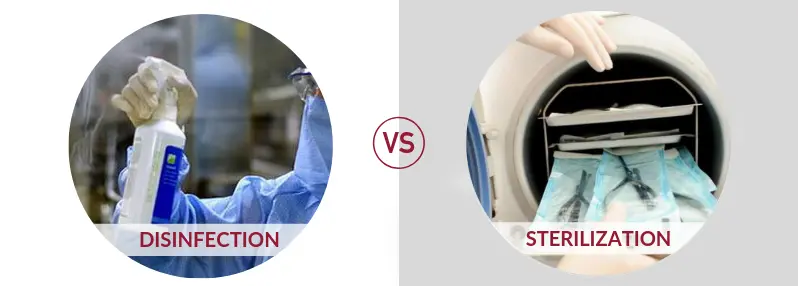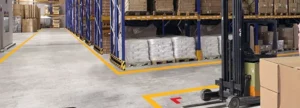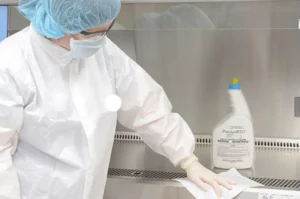For a safer and purer process and manufacture in the pharmaceutical industry, decontamination is a crucial aspect. Since disinfection and sterilization are both decontamination processes, there still lies a major difference between both. In disinfection, the disinfectant solutions eliminate harmful microorganisms from inanimate objects and surfaces. But steam, ETO, Gamma and Dry Heat sterilization processes kill all the living microorganisms which also includes bacterial spores. While disinfection can be achieved by physical or chemical methods, sterilization can be achieved by physical, chemical and physiochemical means.
Between disinfection and sterilization lies a vertical hierarchy orientation of the cleaning process- starting from the lowest, sanitization, disinfection with levels of classification- low, intermediate and high level, decontamination, sterilization, depyrogenation and vapor phase hydrogen peroxide (VPHP).
Sanitizing refers to significantly reducing vegetative bacterial cells wherein IPA could be efficiently sprayed over the operator’s gloves. As disinfection refers to eliminating harmful microorganisms from inanimate objects and surfaces, it has three levels of classification. A low-level disinfectant kills maximum vegetative bacteria and lipid or medium sized viruses. An intermediate-level disinfectant kills the entire group of microbial pathogens except bacterial endospores. Almost all microbial pathogens and some bacterial endospores are killed by high-level disinfectant, but it may not completely affect the large numbers of resistant bacterial endospores.
Decontamination refers to reducing the microbial burden to prevent contamination. Decontamination encompasses both disinfection and sterilization but its level differs from requirement to requirement. For instance, surgical instruments would need to be decontaminated to a level of sterility but that level of microbial killing may not be necessary for environmental surfaces such as floors and walls.
Sterilization refers to killing all the living microorganisms also including bacterial spores. Next comes depyrogenation that involves the destruction of pyrogens like bacterial endotoxins. Depyrogenation is dependent on sterilization as pyrogens require temperatures well above normal sterilization process temperatures.
According to the United States Pharmacopeia, VPHP is the most effective surface sterilant or decontaminant that is capable of achieving sterilization. In the process of decontamination, a spore log reduction value of three to four is adequate because the goal is decontamination rather than sterilization.
While a six log reduction is appropriate for sterilization applications, a three to four log reduction of bacterial endospores is enough to demonstrate successful decontamination. Thus, as compared to disinfection, sterilization is more effective in the decontamination process.
For more assistance regarding pharmaceutical disinfection and sterilization, get in touch with us. We would surely assist you throughout your entire GMP process.




